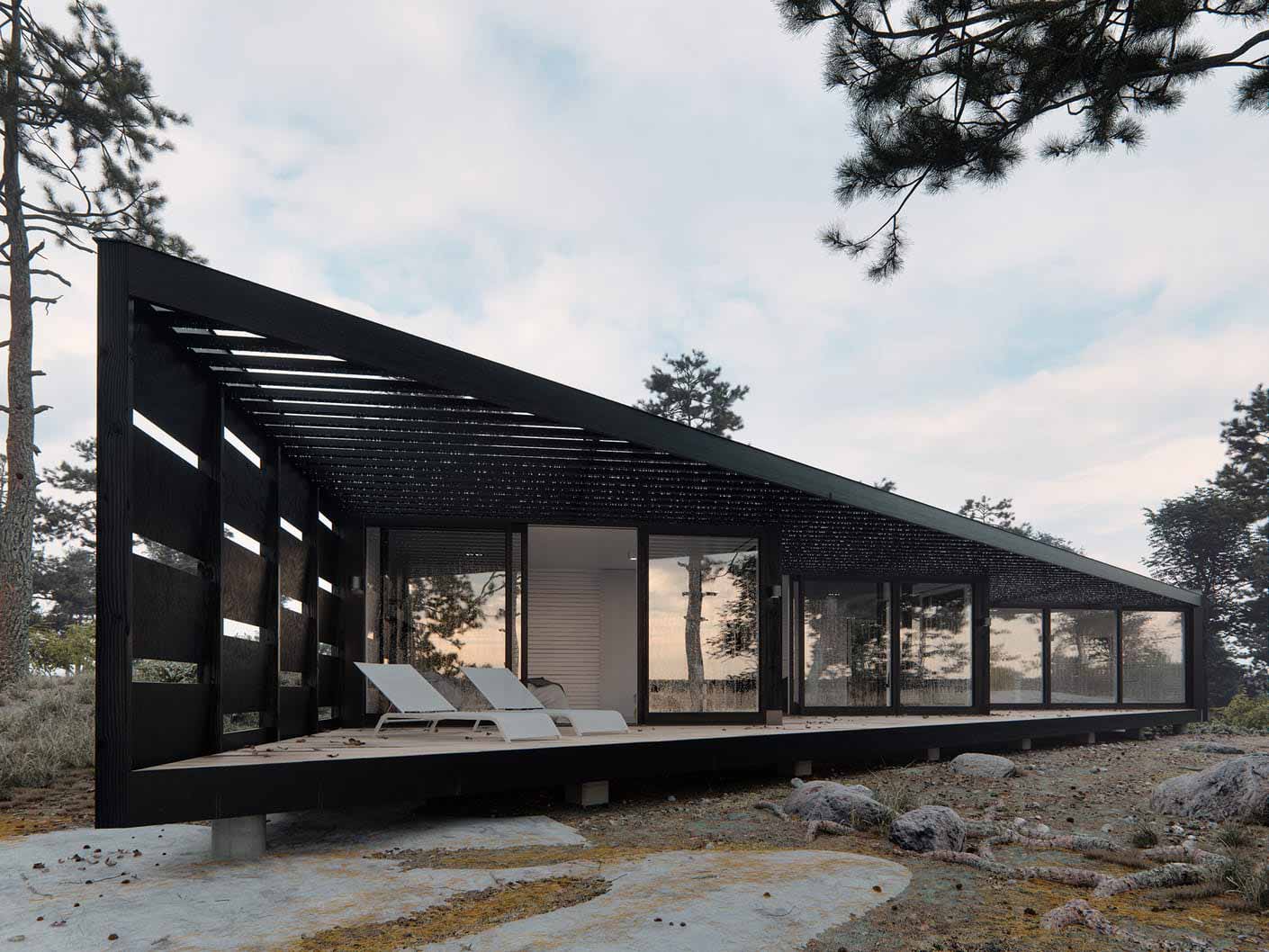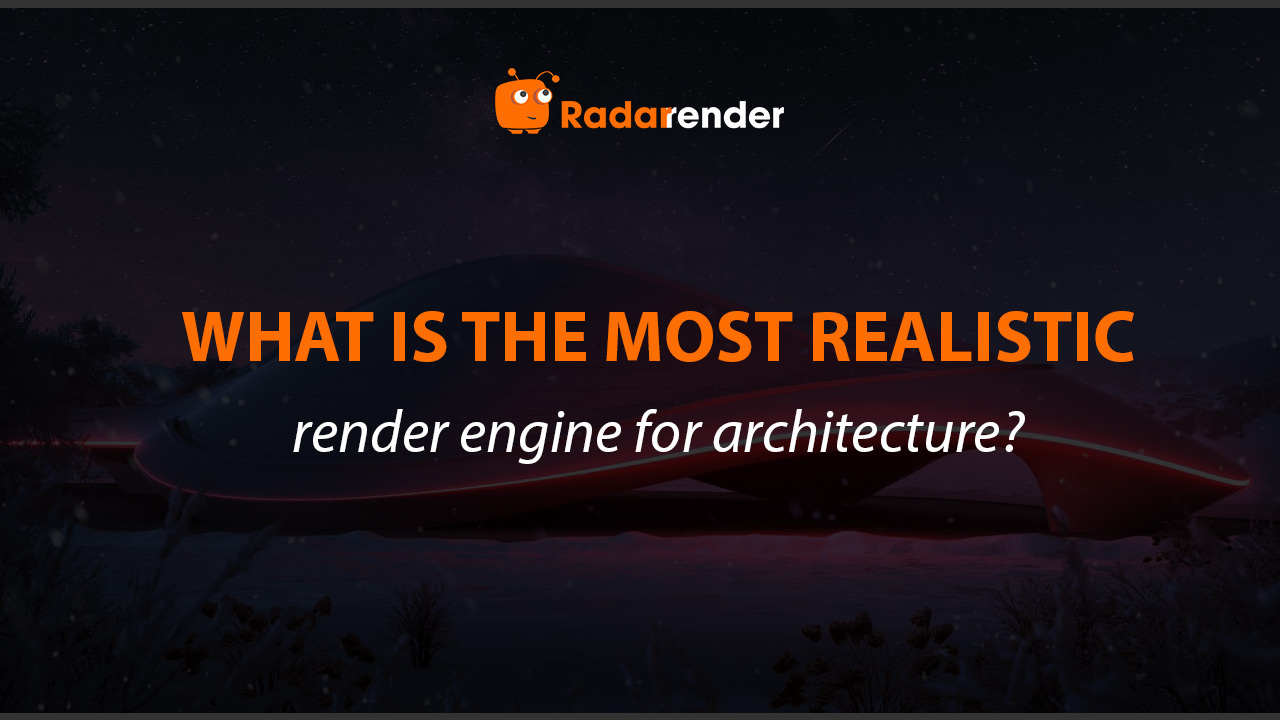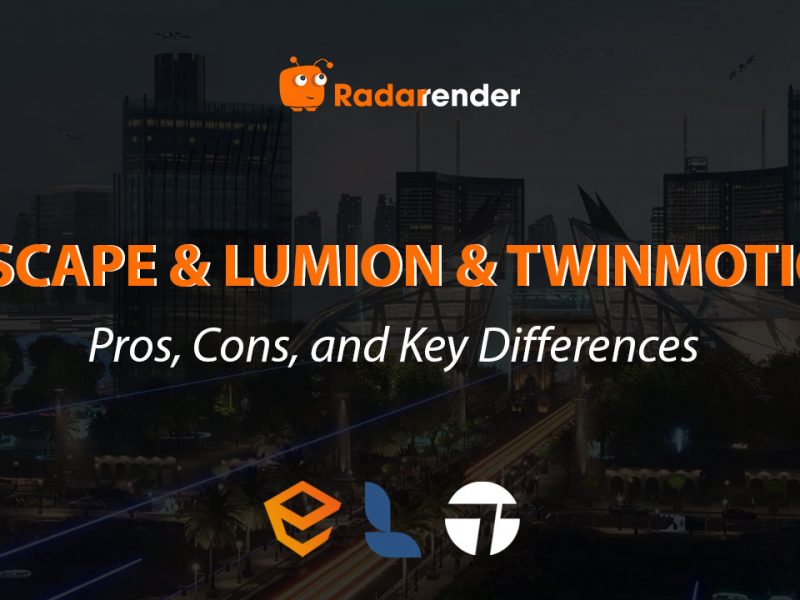What is the most realistic render engine for architecture?
Architectural visualization has become an essential part of the design process, transforming blueprints and CAD models into lifelike images and animations that help clients, stakeholders, and designers visualize a project before it’s built. The quality and speed of your output largely depend on the render engine you choose, so this blog is for you.
With so many rendering tools in 2025, each offers different strengths in realism, performance, ease of use, and integration. Let’s explore the most realistic render engines for architecture in 2025 in this blog with RadarRender.
 Architectural Concept Art by Denys Onyshchenko
Architectural Concept Art by Denys Onyshchenko
Source: chaos.com
Factors to consider for an architectural renderer
Let’s find out below what the factors are that help you find the most suitable render engine for architecture.
- Photorealism
Plays an important role. If your image is as close to reality as possible, it will help viewers feel more real and alive. Increases credibility in projects and convinces customers or investors more.
- Speed
Instead of waiting hours for the rendering process, a render engine with fast and real-time rendering speed will optimize the time. Therefore, it will allow you a more comfortable space to unleash your creativity.
- Integration with architectural software
If the render engine integrates directly with the architectural software you are using, you don’t need to manually export/import files and avoid material loss errors.
- Support for BIM workflows
BIM is an important process for architects. A BIM-enabled render engine will read and retain this data, helping to create realistic and technically accurate images.
- Hardware optimization
Each render engine is optimized for different hardware – some are GPU-based, while others are CPU-based. Software that doesn’t work well with your hardware will waste resources, render slowly, or be unstable.
- Price
Render engines come in a variety of pricing models: monthly, lifetime, or free. For studios and freelancers, software is a significant investment. You need to weigh the cost against the value (performance, quality, features).
- Community support
When using a render engine, you will often encounter technical issues, software errors, or need to find tips to speed up the rendering process. If the software has a large community (forum, Facebook group, Discord…), you will easily find a quick solution.
Top 5 realistic render engines for architecture.
Join RaderRender to learn about the outstanding features of the 5 most realistic render engines for architectural rendering.
V-Ray
First of all, V-Ray is the work of Vladimir Koylazov and Peter Mitev, of Chaos Software Company, founded in 1997 in Sofia, Bulgaria. V-Ray is considered the best architectural visualization software in the world.
 Archipelago House by Radek Ignaciuk
Archipelago House by Radek Ignaciuk
Source: chaos.com
Which features of V-Ray make it stand out when it comes to architectural rendering?
- Very high image quality, suitable for both visual marketing and detailed engineering.
- Optimized for both CPU & GPU (V-Ray GPU mode is very fast if RTX is available.)
- Good with Revit, supports materials and technical lighting.
- Integrates well with 3ds Max, SketchUp, Rhino, Revit…
- Rich Chaos Cosmos material library
- There are plenty of tutorials, forums, and resources for learning and troubleshooting.
- Huge global community (forums, Facebook, YouTube, Reddit). Lots of official documentation and tutorials.
- The price of V-Ray is quite high, going around €454.8/year (V-Ray Solo) and €658.8/year (V-Ray Premium).
Twinmotion
Twinmotion is a high-quality real-time architectural visualization tool developed by Epic Games that allows you to transform your BIM or CAD models into high-quality pictures, panoramas, or standard/360° VR videos.

Source: twinmotion.com
Exploring the highlighted features of Twinmotion below:
- Having an official Epic forum, Revit community is very active.
- Twinmotion utilizes real-time rendering, it relies heavily on the GPU.
- Very BIM-friendly, real-time sync with Revit.
- Strong integration with Revit, SketchUp, ArchiCAD, and Rhino.
- Real-time rendering, strong animation, walkthrough, and concept presentation.
- Extensive library: weather, vehicles, people, environmental effects.
- Free for personal, education; Pro version ~$445/year.
D5 Render
D5 Render is a real-time ray tracing renderer designed for architects, designers, and engineers. It’s known for its ability to create high-quality, realistic visualizations quickly and efficiently, offering a streamlined workflow with features like D5 Global Illumination for accurate lighting and shading.

Source: d5render.com
What are the outstanding features of D5 Render? Let’s check them out below:
- D5 Render is compatible with SketchUp, 3ds Max, Revit, and other 3D modeling software. In addition, it can achieve seamless integration and real-time synchronization.
- The community is growing, with a large number of tutorials on YouTube and an active Facebook group.
- Based on GPU-based RTX GPUs, the stronger the performance, the smoother the rendering.
- Supports Revit/IFC and BIM.
- The interface is simple and intuitive, and the operation is simple, just like playing a game.
- Built-in material library, trees and animated characters.
- The communication version is free, and the professional version is about $360 per year.
Corona
Corona is one of the most realistic render engines for architecture. This renderer is a CPU-based rendering engine for 3D visualization, known for its ease of use and high-quality results. It offers both biased and unbiased rendering options, and its core technology is path tracing.
 420 Kent by VisEngine Digital Solutions
420 Kent by VisEngine Digital Solutions
Source: chaos.com
What are the key features of Corona?
- Corona’s UI is designed for simplicity. It allows users to learn and create professional-looking renders quickly, even without extensive 3D rendering experience.
- Friendly community, especially in the field of interior design with 3ds Max.
- Running entirely on CPU, suitable for multi-core machines.
- Mainly for static images, not yet friendly to complex BIM processes.
- Only officially supported for 3ds Max, suitable for 3ds Max users.
- Slower because it purely supports CPU, but with high realism.
- Cheaper than V-Ray, Corona’s price is €358.80/year (Corona Solo) and €454.80/year (Corona Premium).
Unreal Engine
Last but not least, Unreal Engine is a powerful real-time 3D creation tool developed by Epic Games. It is used to create video games, films, visual effects, architectural visualizations, and immersive experiences. Unreal Engine is known for its flexibility, allowing users to create highly detailed and realistic environments, characters, and effects.
 Source: www.unrealengine.com
Source: www.unrealengine.com
Explore the outstanding features of Unreal Engine below:
- Large user base, abundant resources, but requires deep understanding of technology.
- Can be extremely realistic, but requires skills.
- Most powerful in real-time rendering, dynamic lighting, and animation.
- Need very powerful GPU if doing large projects (VR, interactive animation).
- Very good BIM support via Datasmith, the most powerful tool currently. Easy to import models from Revit, Rhino, and SketchUp.
- Free until revenue >$1M USD (mainly royalties).
Which render engine for architecture should you choose?
If you need:
- High-quality images, then V-Ray and Corona are the right choices. These renderers produce photorealistic images with sharp details, making them ideal for high-end interior and exterior visualizations.
- To present ideas quickly and meet tight deadlines, we recommend D5 Render or Twinmotion. These tools are easy to use, offer real-time rendering, and deliver extremely fast photo and video outputs, making them perfect for fast-paced projects.
- A renderer that supports BIM and engineering projects, then consider Twinmotion, V-Ray for Revit, or Unreal Engine. These render engines integrate seamlessly with software like Revit and ArchiCAD, and they support engineering data workflows effectively.
- Interactive experiences, VR, or walkthroughs, you should go with Unreal Engine. It is the best renderer for VR and interactive tours; however, keep in mind that it has a steeper learning curve and requires a powerful hardware setup.
Frequently asked questions
- Which render engine is best for photorealistic architectural rendering?
V-Ray and Corona Renderer are widely considered the best for photorealistic rendering due to their advanced control over lighting, materials, and detail. Both are commonly used in architectural visualization studios.
- What is the easiest render engine to learn for beginners?
D5 Render and Twinmotion are beginner-friendly with real-time previews and drag-and-drop materials. Therefore, they’re ideal for architects or designers with minimal rendering experience.
- Which engine is best for real-time walkthroughs and client presentations?
Twinmotion, D5 Render, and Unreal Engine excel at real-time rendering and walkthroughs. Unreal offers the most customization, while D5 and Twinmotion are quicker to set up.
- Do I need a powerful computer to use these render engines?
V-Ray (GPU mode), D5 Render, Twinmotion, and Unreal Engine benefit from a strong GPU, especially RTX series cards.
Corona Renderer is CPU-based, so it requires a multi-core processor but not a powerful GPU.
- Which render engine integrates best with BIM tools like Revit or ArchiCAD?
Twinmotion and V-Ray for Revit offer strong BIM support.
Unreal Engine, through Datasmith, is also powerful for BIM workflows but has a steeper learning curve.
- Can I use more than one render engine in a project?
Yes. Many professionals model in SketchUp, Revit, or 3ds Max and use different engines for different stages—e.g., D5 for drafts and V-Ray for final images. Just make sure the workflow is compatible.
See more:






